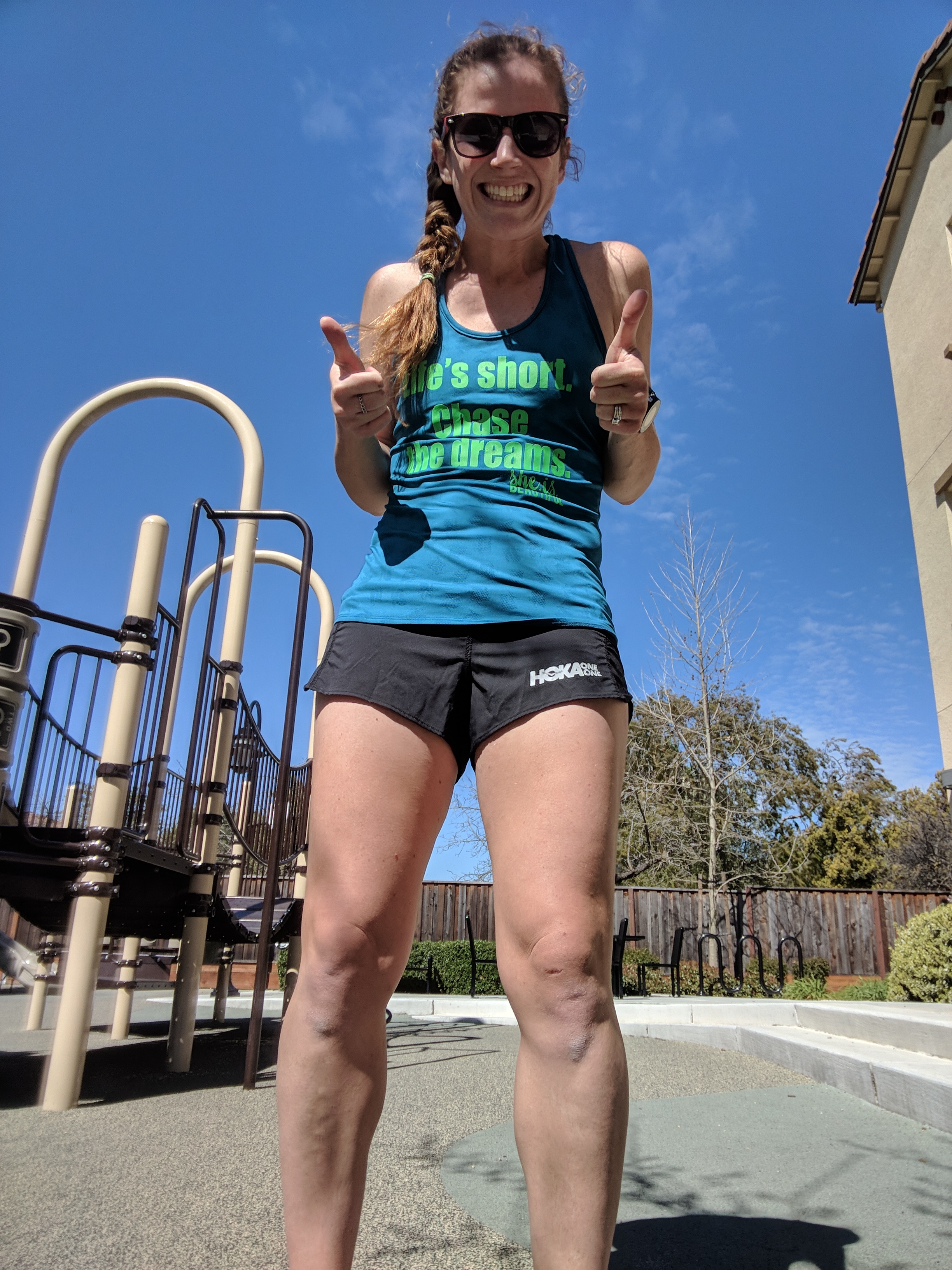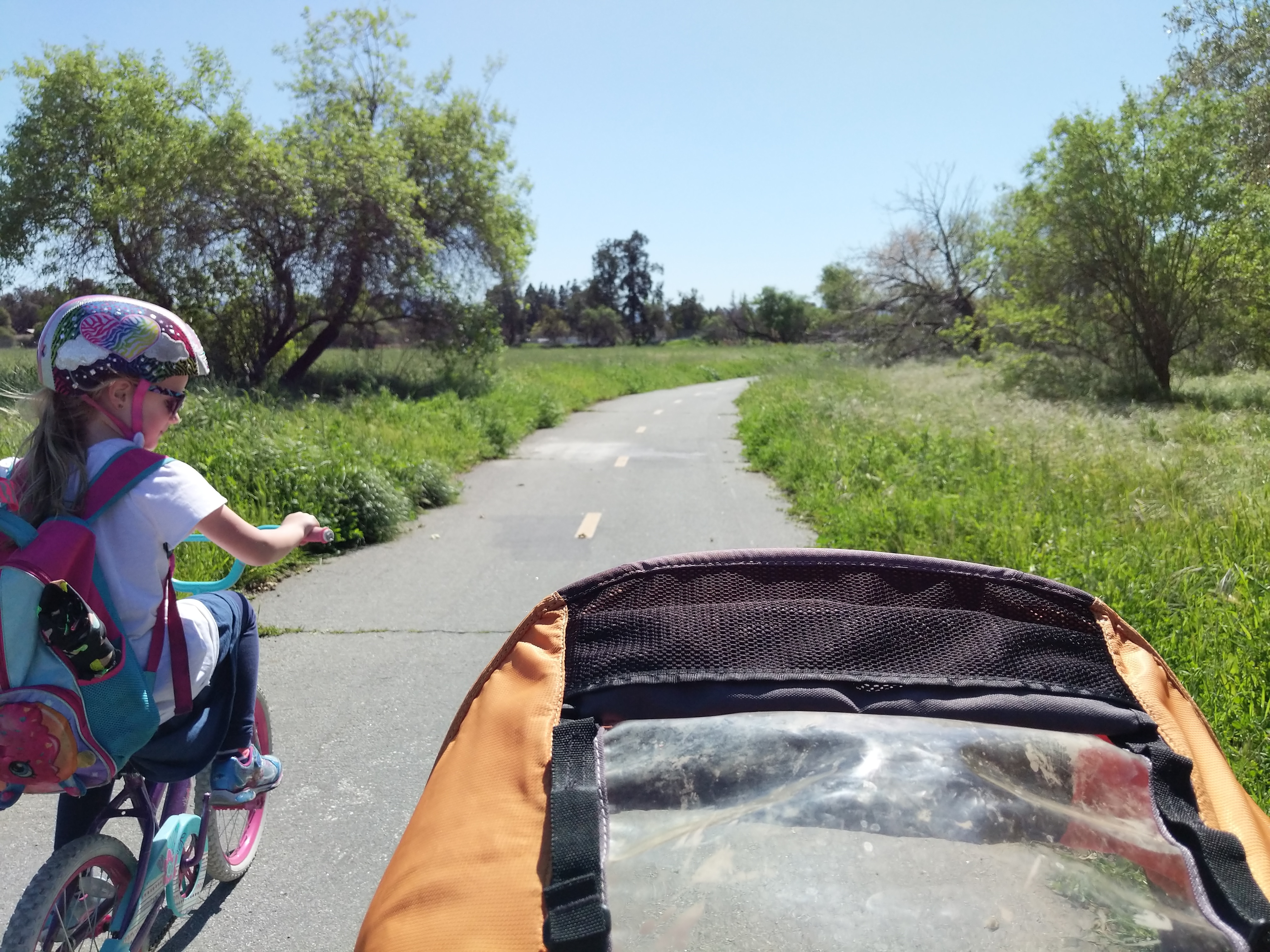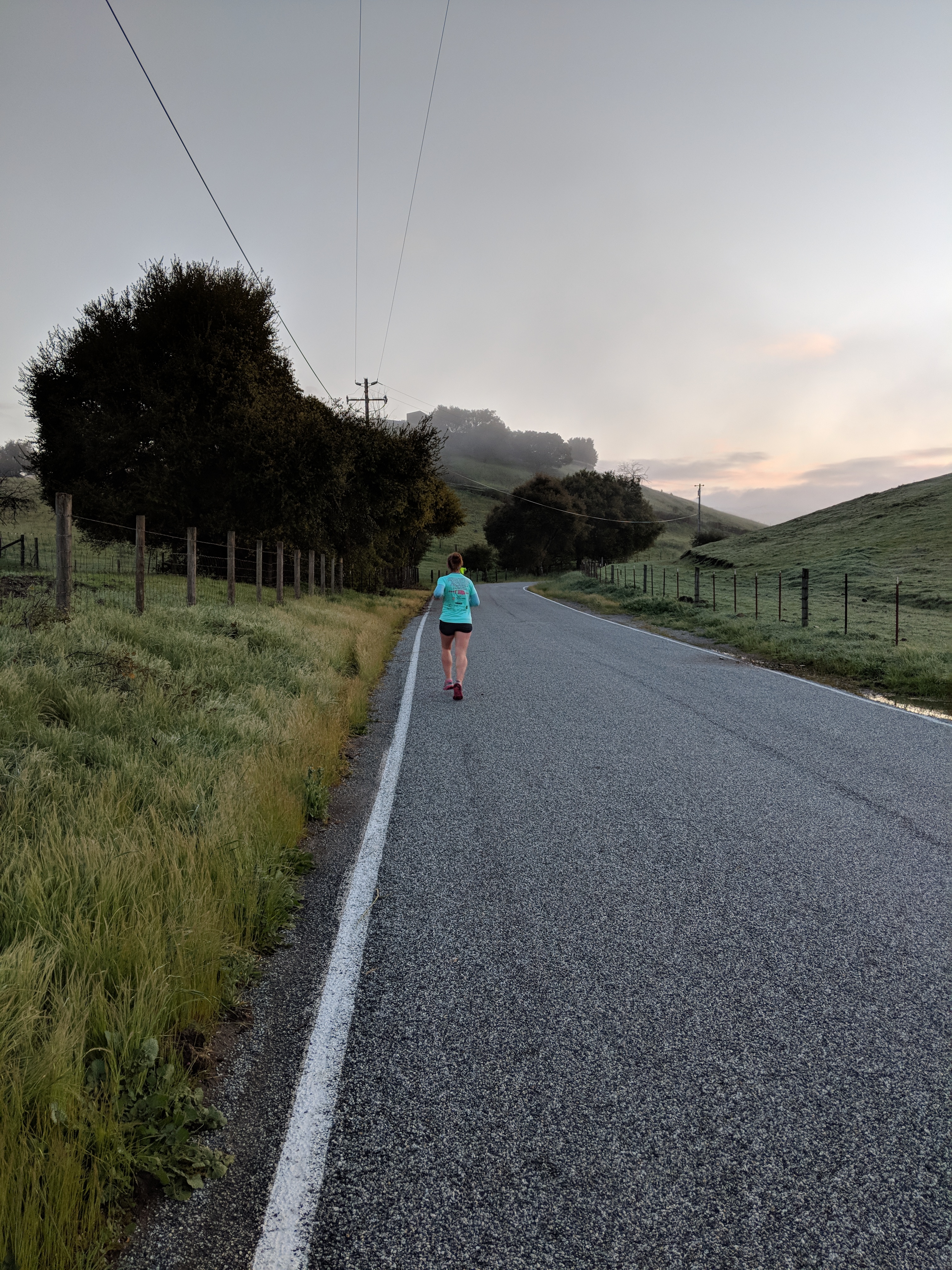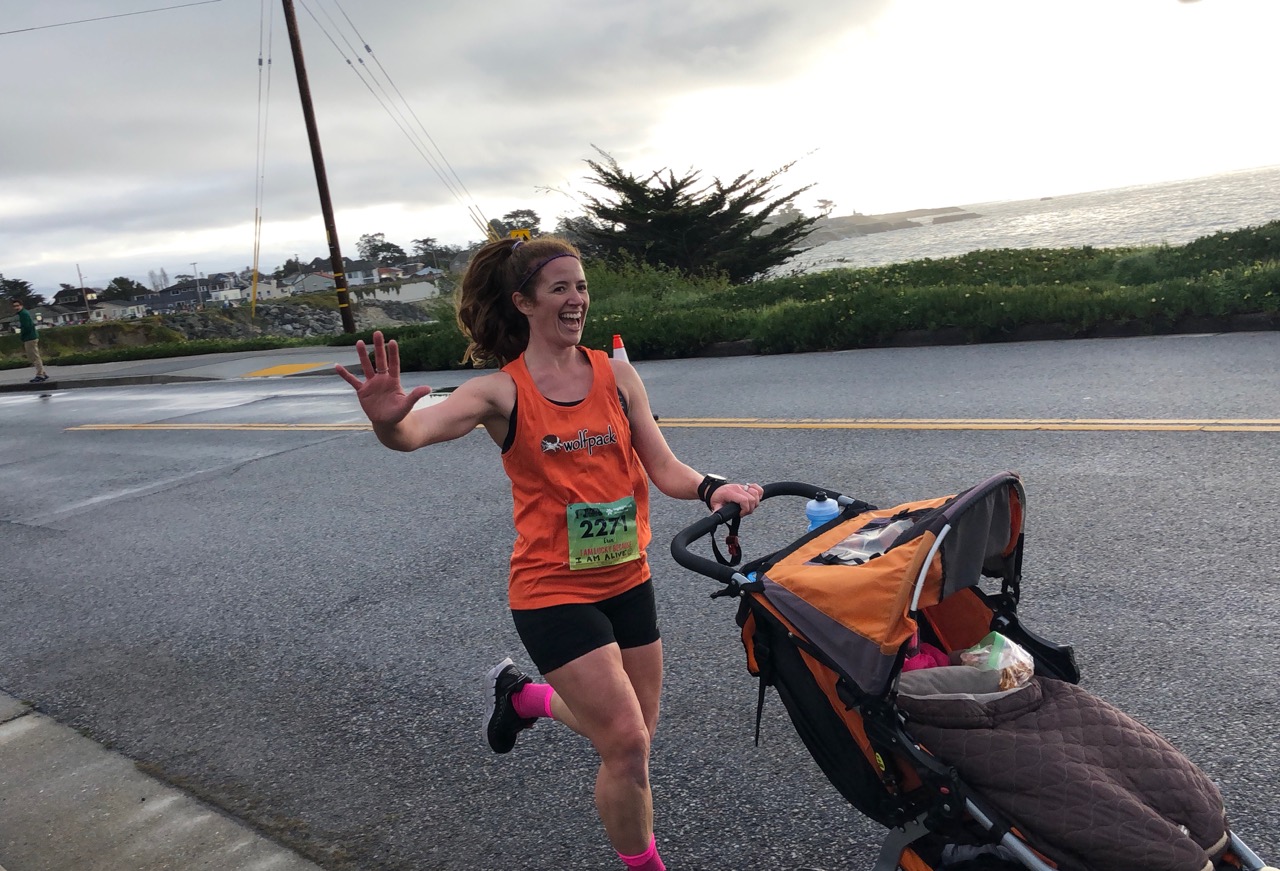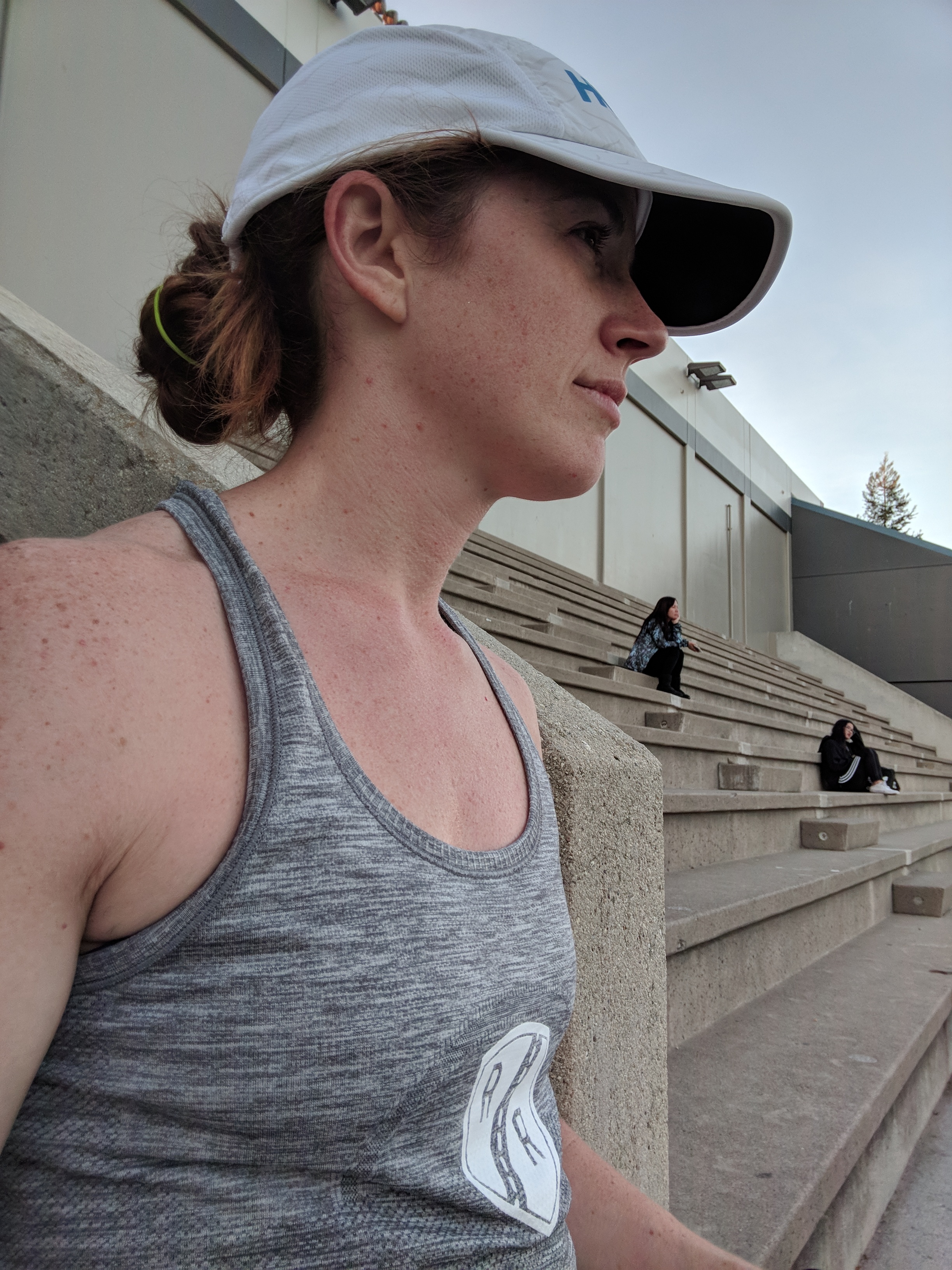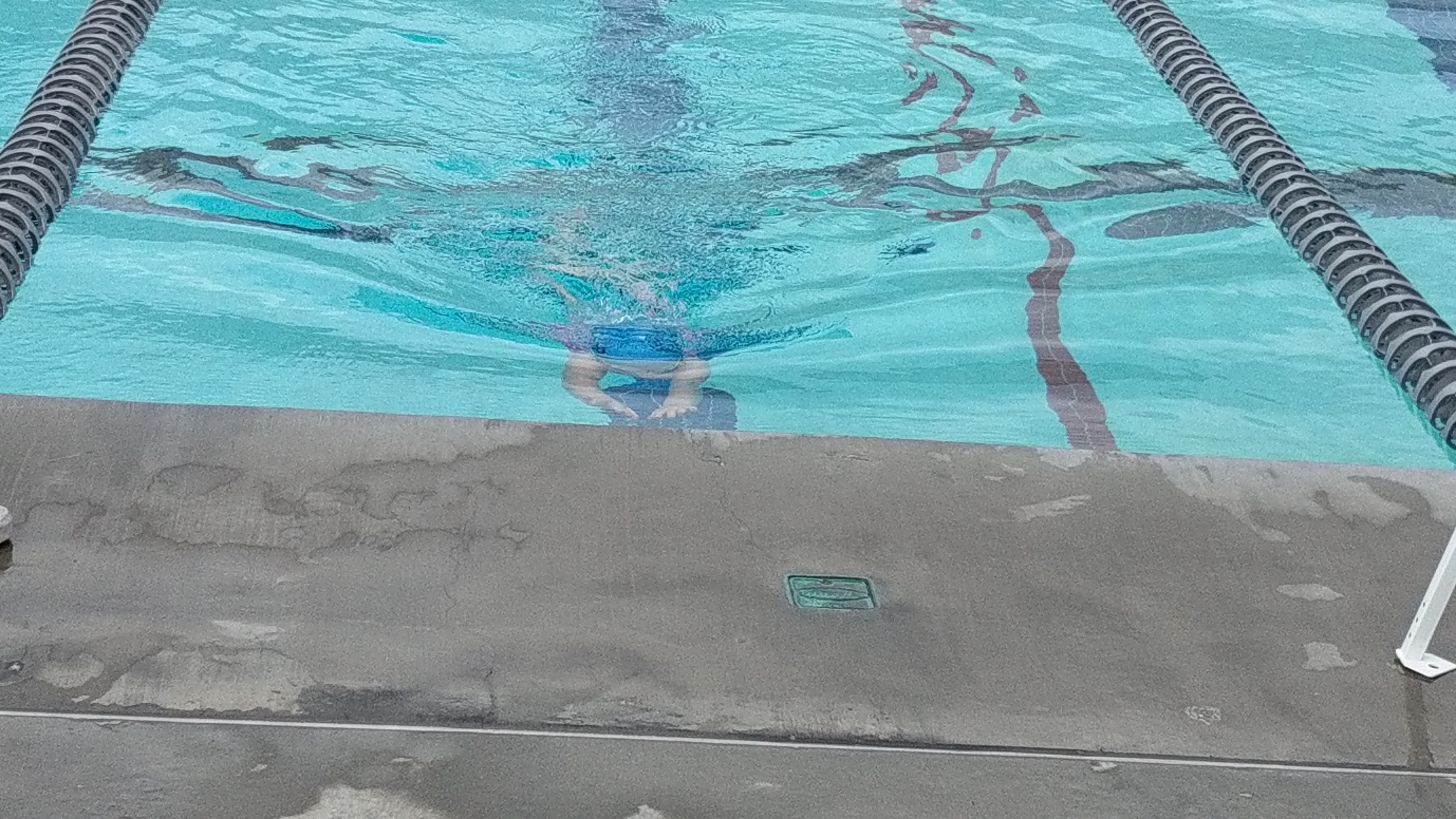Alex Hutchinson’s _Endure: Mind, Body, and the Curiously Elastic Limits of Human Performance_ (book review)
How good can I be?
If I were a betting woman, I’d wager that it’s highly likely that we’ve all asked this question of ourselves, publicly or privately, at least once in our lives. Particularly if we consider ourselves to be athletes, and more pertinent to the tone of this blog, especially if we are runners, it is highly likely that we have all wondered we have wondered where our limits lie. How much further can we run, how much faster can we go — simply stated, how much better can we be? — and relatedly, what will it take to get to that elusive point of “better,” that point beyond where we currently reside?
Adding to the seeming explosion in the canon of brain training and running literature comes writer Alex Hutchinson’s newest book, Endure: Mind, Body, and the Curiously Elastic Limits of Human Performance. I’ve read Hutchinson’s work pretty regularly when he was a contributor over at Runner’s World (and now that he’s gone over to Outside) and back in the day, I read one of his other books, Which Comes First: Cardio or Weights? From what I can remember from his time at RW, he was one of the “running science” guys, someone who’d write about some esoteric, “super science-y” running-related concept and who would then package his findings into accessible take-aways for readers, those of us who aren’t endowed with a Ph.D in physics like himself but who are nonetheless curious about the scientific process that underlies all this running-related stuff.

So it was with Endure. As the title suggests, in his book, Hutchinson examines the so-called limitations to human performance, particularly in the realm of endurance and thus, running (but not exclusively). In a way, his book reads like a literature review of the numerous studies in the past that have examined anything and everything related to human endurance, yet his book’s not just a literature review (and thankfully so). Instead, as Hutchinson explores the “curiously elastic limits of human performance,” he examines exactly why human performance is so malleable by simultaneously breaking down, problematizing, and hypothesizing about what different research findings suggest and their long-term implications for human performance. When I worked in higher ed, we always said (sometimes begrudgingly) that everything is a process. That’s the case here, too. Even if we think of endurance as being a simple mathematically-based equation, the reality is that it’s much more fraught with variables, some of which that matter (and many of which that don’t, or don’t to the degree to which we think they do).
But I’m not a science person; I’ll probably hate this book. Well, sure. Most of us aren’t “science people”; shoot, I haven’t been in a science class for a good 10+ years. Nonetheless, if you’re a runner — and if you’re here in my teeny, tiny corner of the internet, surely you are — then simply by being a runner (or, I mean, being alive…) , you’re a participant in science. You don’t have to know all the terminology or be able to recite the Krebs cycle to understand a lot of what Hutchinson explains in his book, and fortunately, more often than not, his writing is completely accessible. There is simply so much that happens when we go for a run — on the physiological level, on the psychological level, on so many bodily systems levels — that it’s really pretty profound when you think about it.

While Hutchinson doesn’t break-down his book in that way — there’s no first you inhale the oxygen, which goes to your lungs, to where your brain sends a message — there is a healthy amount of exploring, of wondering why, in a major road race (DC’s Cherry Blossom 10 miler), for example, he personally was able to close the gap on a huge number of more able-bodied competitors one day, whereas in other races, he faltered horribly and finished poorly. Why is it that some days we can close like hell and finish a race or a hard workout so much better than our wildest dreams? What does it take to move the needle just a little bit more and get just a wee bit more out of ourselves? How much of our limitations are within our control to overcome, and how much lies beyond us? These are the questions that he spends over 200 pages exploring, buttressed with a litany of research to help arrive at his answers.
If you’re like a sizable percentage of the running community right now, you’ve probably been reading lots of other “brain training” related books, like How Bad Do You Want It?, Grit, or Run Strong, Stay Hungry. I’ve read all three of those books and have genuinely enjoyed each of them. I think every runner out there will do anything (legal) to gain a mental edge when it comes to racing, and most of us realize that our mental game needs much more attention and love than what we’ve been doling it out to it.
What separates Endure from any of the three aforementioned works (and in particular, the first two) is that Hutchinson shows that our limits simply are not just a matter of not wanting something badly enough. In other words, we can’t just will ourselves away to realizing a better performance. There is absolutely something to be said for mental fitness and mental resilience, absolutely, but making the assertion that “I didn’t want it badly enough” undermines what’s, in actuality, a really intricately-organized choreography between our mind and our body at any given time. It’s a tidy statement to claim that we faltered at achieving our goals because our mental game wasn’t strong, and while that may be true, there’s likely much more going on. That “much more going on” — that’s what Hutchinson tries to get at in this book.
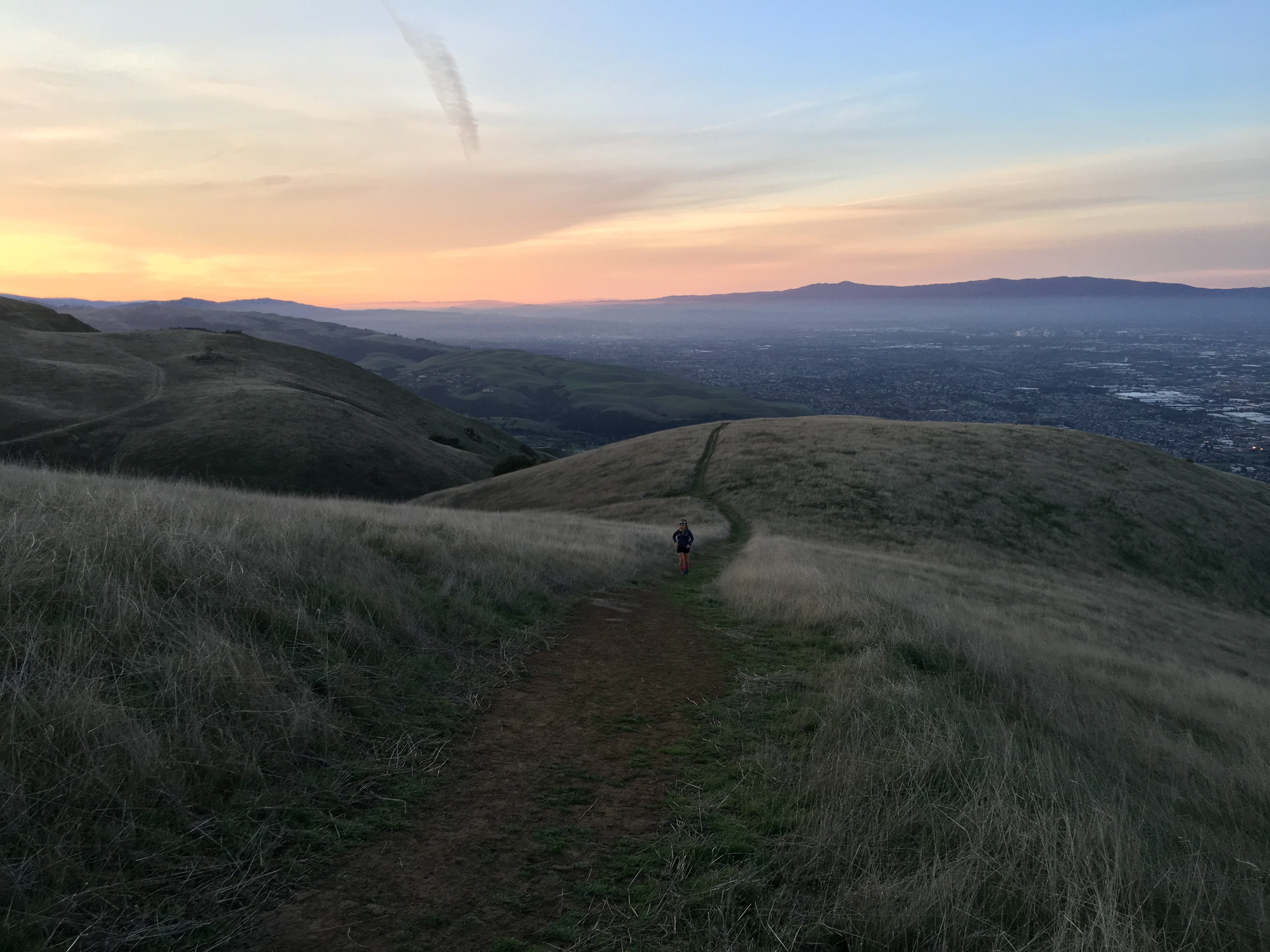
He names lots of familiar folks as he explores the research related to endurance, so if you’ve read virtually anything about this subject in the past couple years, chances are high that you’ll recognize a lot of the key players: Tim Noakes and Samuele Marcora among them. While Hutchinson doesn’t explicitly pin Noakes and Marcora against each other, as he explains their research (and their concomitant research implications), it’s fairly obvious that they are. Generally speaking, when it comes to what we all understand to be “endurance,” most of us think of it in one of two ways: something that’s more a matter of mental resiliency and toughness (a la Marcora) or something that’s determined by a Central Governor or otherwise biologically-dictated and precluding factor (a la Noakes). This strict bifurcation is what Hutchinson upends a bit by straddling a lot in the gray area. In Endure, Hutchinson problematizes this otherwise clean dichotomy and posits how our endurance isn’t necessarily a matter of either/or.
In a word (or a few): this shit’s complicated. Its implications are enormous, however.
I appreciated how Hutchinson structured his book, dividing it into three distinct parts (Mind and Muscle, Limits, and Limit Breakers), and then sub-dividing each section into even more specific parts (including exploring the view of human bodies as machines, a la A.V. Hill; the limits that pain, oxygen, or heat impose on human performance; or how some people “train” their brain to perform better). Unlike, say, How Bad Do You Want It, Endure doesn’t feature case study after case study to elucidate its claims. Instead, Hutchinson intersperses his case studies and vignettes more selectively, nestled amongst the science that he’s exploring, making the book lighter on the storytelling side and heavier on the academic side.
That said, I still thought his writing style was completely accessible and easy-to-follow, and thankfully, I never felt bogged-down or suffocated in incomprehensible scientific jargon or minutiae. (Again, let me reiterate that I haven’t been in a college science class for over a decade, and I was still absolutely able to follow his writing and actually enjoyed it). In addition, Hutchinson anchors a lot of his findings and exploration in the running and cycling communities, ostensibly because it’s from those disciplines that a lot of the endurance-related science and studies are based, but he still includes other applicable findings from hiking-related research and Arctice exploration; I guess you could say that endurance is endurance, for the most part.
So what do we make of endurance, then? Or rather, how do we define it? As you can probably guess, this is a loaded question, but for the purposes of his book, Hutchinson subscribes to Marcora’s idea of endurance being “the struggle to continue against a mounting desire to stop,” a definition that importantly involves both the mental and the physical components of the game.
That’s really the crux of the book: that endurance is mental, yes, but it’s also very much physical (or physiological); that there are components to our endurance capacities over which we can control, sure, but there are others over which we are in the passenger seat, more or less along for the ride. We can only control so much — at least right now, at this moment in history. How that will change over the coming years — and the ethical implications therein — remains to be seen.
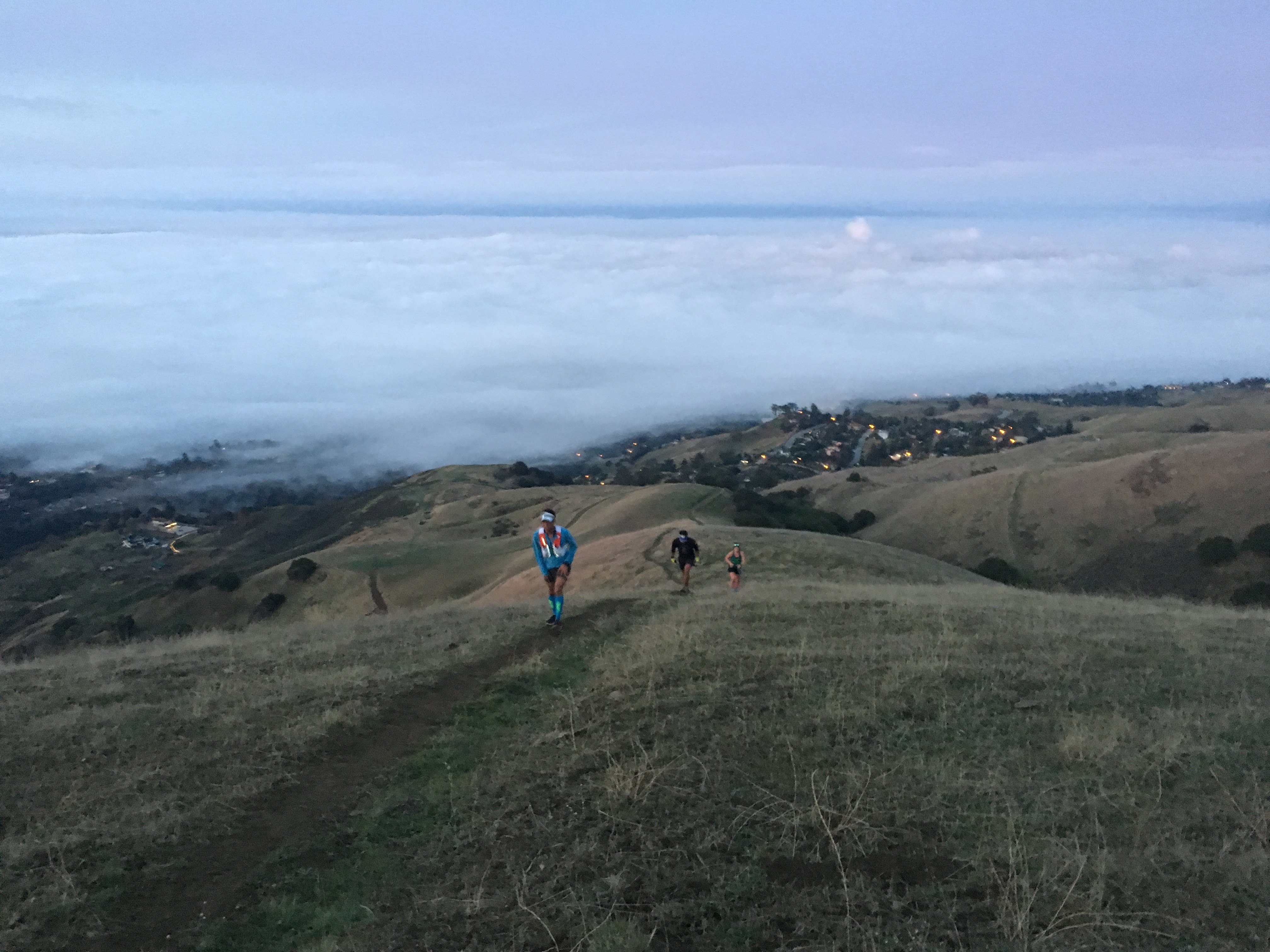
As is probably to be expected, at least from my experience from reading other science writing, Hutchinson takes a lot of the popular wisdom and so-called conventional knowledge from this particular realm of science and turns it on its head a bit, challenging it and showing how — and why — exactly things are more complicated than we tend to think they are. Case in point: dehydration (or thirst). He devotes an entire chapter to the subject under the “limits” section of the book, and aside from recalling the oft-cited Gatorade origin story, he gets deep into the science — the original studies and the follow-ups that contest them — that are responsible for the popular notion that even being dehydrated just 2% can cause a noticeable performance deterioration. It’s really fascinating stuff.
Supplementing this chapter is “fuel,” another foray into the biological/physiological under-the-hood effects that our fuel has on our performance and how (or why) it is that our fuel of choice affects in the profound ways it does. It’s beyond the scope of my review here to detail each limitation as Hutchinson characterizes them, but you can probably guess some of the others — including heat, oxygen, and pain. Again: I find this stuff to be fascinating, the least of which because there is just so much damn contention about these ideas within the running and greater scientific communities. Collective wisdom is just that, collective wisdom. No one said anything about it ever being accurate (or sound). As a layperson, it’s interesting to read all the different sides to the argument.
Endure isn’t a training manual, nor does it come with glossy, self-referential exercises at the end of each chapter to help you pull away key tidbits that will necessarily help propel you to your Next Great Big Thing in your own racing or personal endeavors. Endure is much too untidy for something that, well, neat. Instead, this book posits all the many shades of uncertainty that exist within ourselves and within our capacities for realizing our goals — be they athletic, career, or whatever else — and in doing so, it lends a ton of power to the numerous variables that can affect our performance at any given time. The limiting factors that I touched upon already definitely play a role here — I’m talking heat, oxygen, fuel, and thirst — but other comparably-important variables include a coach’s words (i.e. how you’re prepared, or not, going into a key workout or race); Borg’s rating of perceived exertion (RPE, as you’re probably more familiar with), and pacing (or as Ross Tucker, Tim Noakes’ acolyte, described as “the anticipatory regulation of performance” [211]). Pacing, in and of itself, would probably be a sufficiently robust example to use for the entirety of this book simply because it incorporates both the mental and the physiological side to endurance: or in other words, according to Tucker, it’s “the process of comparing the effort you feel at any given point in a race to the effort you expect at that stage — an internal template that you develop and fine-tune from experience” (211). You’re not going to walk away from Endure feeling like you necessarily have an arsenal of mental Jedi tricks to power you through the next struggle you encounter in your pursuits, but it will make you more cognizant of the role that everything sometimes can (or does) play. Sometimes cognizance is enough.
This is arguably one of the poorest book reports I’ve written because quite honestly, I didn’t know where to start with it. There’s so much good stuff in Endure, from both the science and the “human” side of things, that figuring out how to neatly encapsulate it all seems like a grand exercise in futility. Probably one of the best aspects to this book is in how Hutchinson punctuated the beginning of each major section with a snapshot from his time as an on-site reporter in Italy during Nike’s Breaking2 attempt last year. As I understand it, he was one of a very few and select reporters granted on-site press access to the highly secretive behind-the-scenes detail, and really, when we talk about human endurance and human performance, you can’t get much of a better stage than that: humans attempting to run 26.2 miles in under two hours on their own, (dope-free) volition.
That’s where this stuff gets exciting, when we as humans begin to realize what Hutchinson calls the elasticity of our performance, that we can slowly but surely begin to wrap our heads around going after our Next Great Big Thing, whatever it is. No one thought that humans could safely run a sub-4 minute mile, until Sir Roger Bannister did (and aptly, Hutchinson talks about this a lot and the issues with such a blanket claim like that). Remember when women couldn’t run marathons — and most definitely couldn’t run while they were pregnant — until they could and until they did? We couldn’t put humans into outer space until — you guessed it — we did. It’s in this audacious dreaming, scheming, and hoping that we can begin to conceptualize the versions of ourselves that are getting after our Next Great Big Thing and that we realize how much we have shortchanged ourselves all this time because of some (or many) preconceived notions or limitations we’ve thrust onto ourselves.
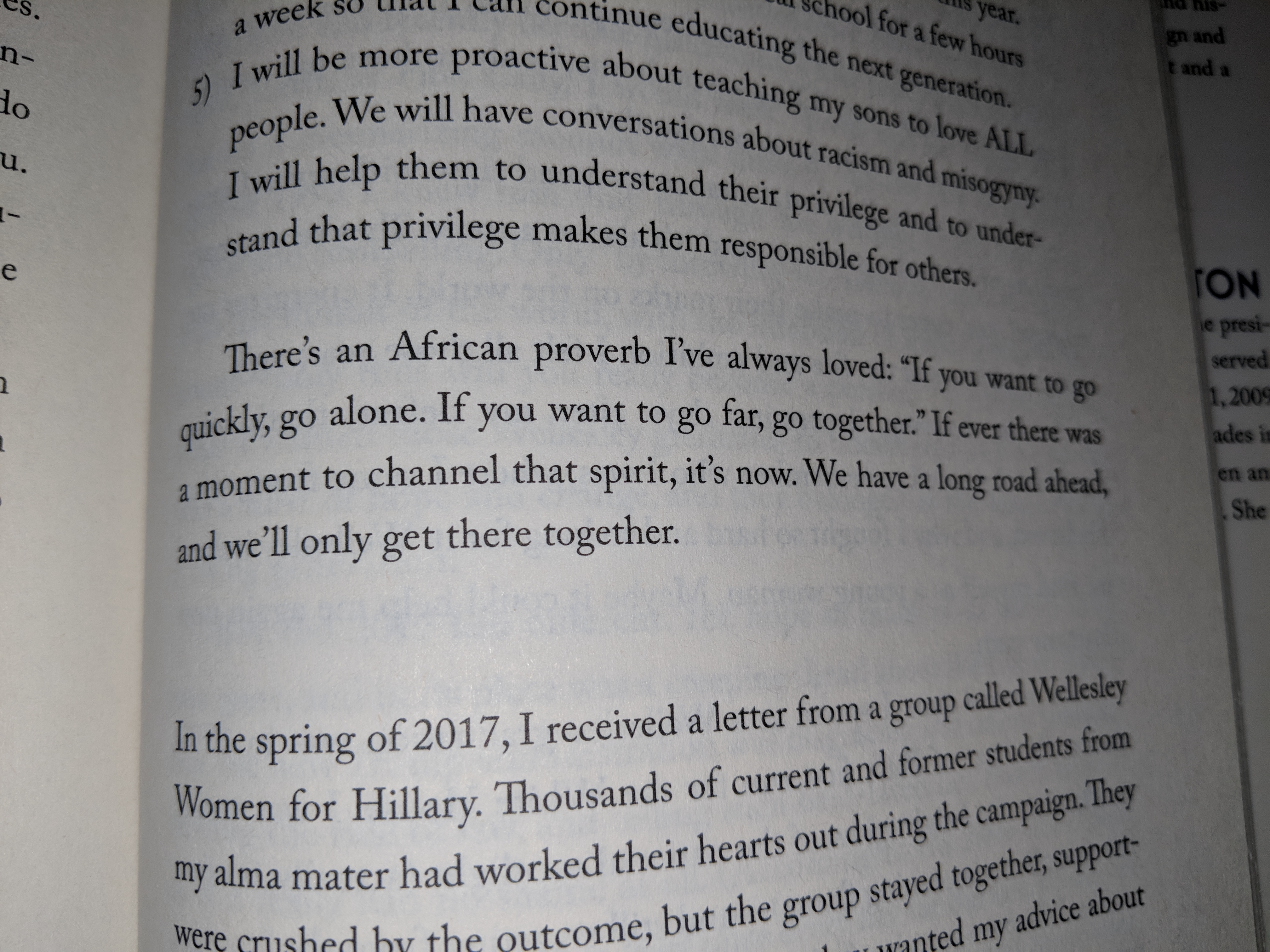
Toward the end of his book, Hutchinson talks about how “placebo” is a bit of a dirty word in science for all the obvious reasons, and he features a scientist (whose name I can’t remember, unfortunately) who challenges all of us to alter our thinking on this, acknowledging that the “belief effects” an athlete has can (and often does) influence his/her performance quite significantly. Again, I think this is fascinating to read about because in a sport like running that is so littered with endemic levels of doping, if there’s something out there that athletes can use and swear by as a performance booster — even if it’s scientifically irrelevant and has no causal or correlative effect — by all means, if they think it works, it works; what do we care? Wear the mantra bracelet, don the compression socks, put your hair up in that special rubber band; if it doesn’t violate the integrity of your abilities with some shady pharamaceutical, why not?
It will be interesting to see how human endurance changes — or is challenged — in the next half-century. There is so much out there now, so many strategies and gear and visualization and brain techniques (and more) that promise everything short of a breakthrough, and for people who are itching to squeeze out every last drop from their potential, all of these tools are viable options and fair game. With Breaking2, many people moaned and groaned the “manufactured” and “contrived” nature of it and duly complained that Nike’s VaporFlys yield up to a 4% increase in performance (making it akin to legalized doping, as some critics are claiming) and also mentioned that the runners got to draft behind an electric Tesla with a big-ass clock that blocked the wind ever-so-perfectly. Despite all of this, the fact that some of the world’s best runners (marathoners, specifically) decided that they’d go for a moonshot and attempt to do something that no one else had ever done — that’s what matters. That’s the takeaway. That’s what’s curious and elastic.
Hutchinson doesn’t end his book with any sort of inspirational if the Breaking2 guys can do it, so can you! message for the masses. Interestingly, though, when he talked to Eliud Kipchoge (who ran 2:00:25 at Breaking2) immediately post-race, Kipchoge, himself, made it a point to say that his 2:00 victory, while short of the Breaking2 dream, was a victory for all of us — for all of humanity. You could say that the Breaking2 venue was a perfect embodiment of what endurance is all about — regardless of how “contrived” or how big of a “marketing and PR stunt” it may have been — because it was in that huge, global stage that many of us were reminded that we are capable of doing some incredible and extraordinary things. Our endurance is more than carbon shoes, cheesy mantras, or being the conductor on our own Pain Train; it’s all of that stuff, sure, and more. Much more. We rarely, if ever, allow ourselves to glimpse down that rabbit hole.
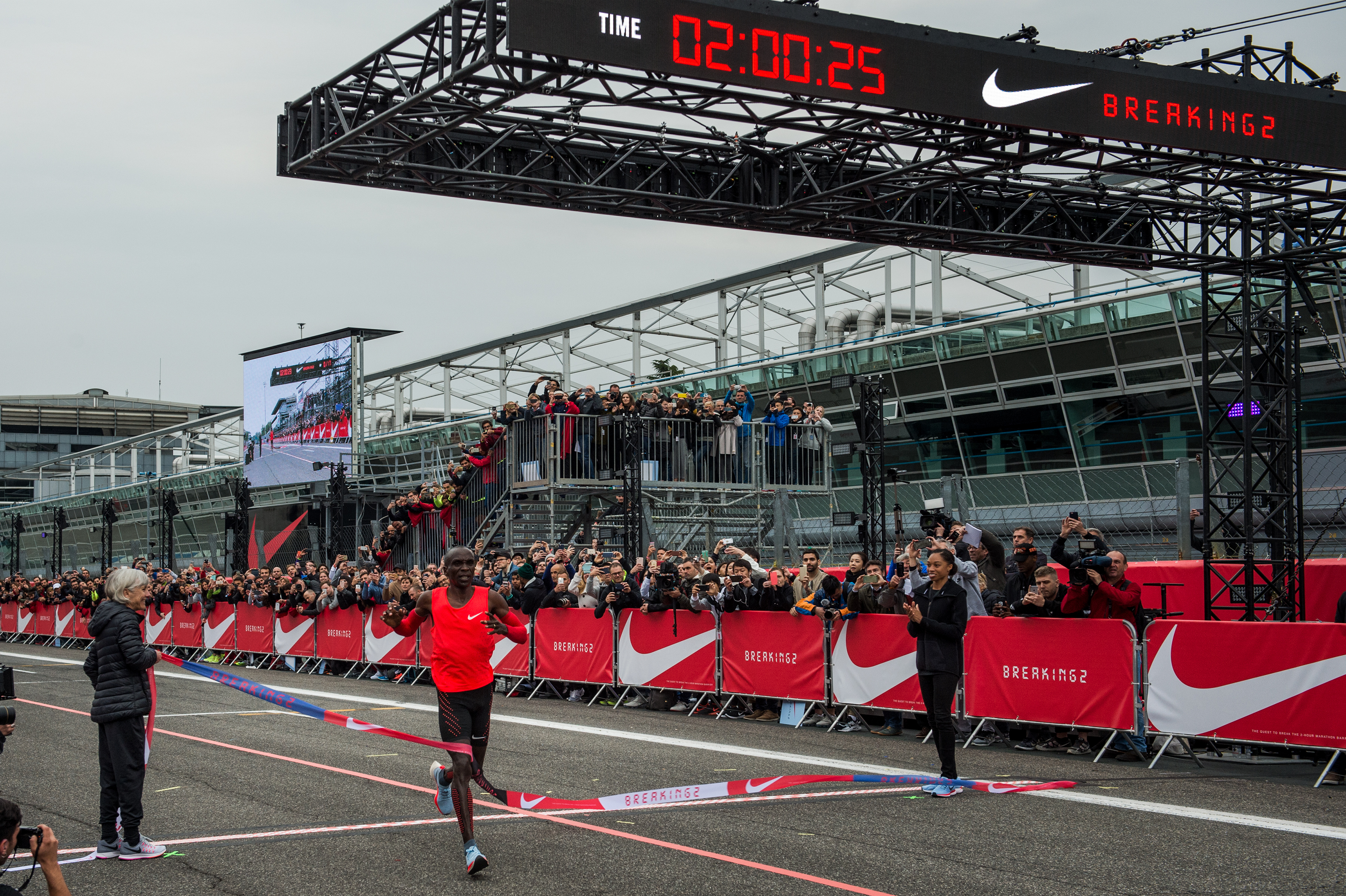
Most of us will not go on to realize otherworldly athletic feats on a global scale, but that doesn’t mean that we can’t achieve accomplishments that are otherworldly for ourselves. What that looks like will be dependent upon each of us, of course, and our relative strengths and weaknesses. My takeaway — and I’m guessing that of Hutchinson, his point of writing this book — is to remind all of us that a lot, but not all, of our limitations are self-inflicted. Each of us is able to realize so much more than we know (or could probably comprehend) — and that shit’s exciting exhilarating, if you ask me.
How we stretch ever-so-slightly more out of ourselves with each day, each trial, each tribulation is up to us and us alone; as Hutchinson’s subtitle suggests, our capacity to endure is curious, yes, but it’s also elastic, and therein lies the excitement, my friends.
If you can fill the unforgiving minute
With sixty seconds’ worth of distance run,
Yours is the Earth and everything that’s in it.
-Rudyard Kipling, “If” (also quoted on p.7 of Endure)
